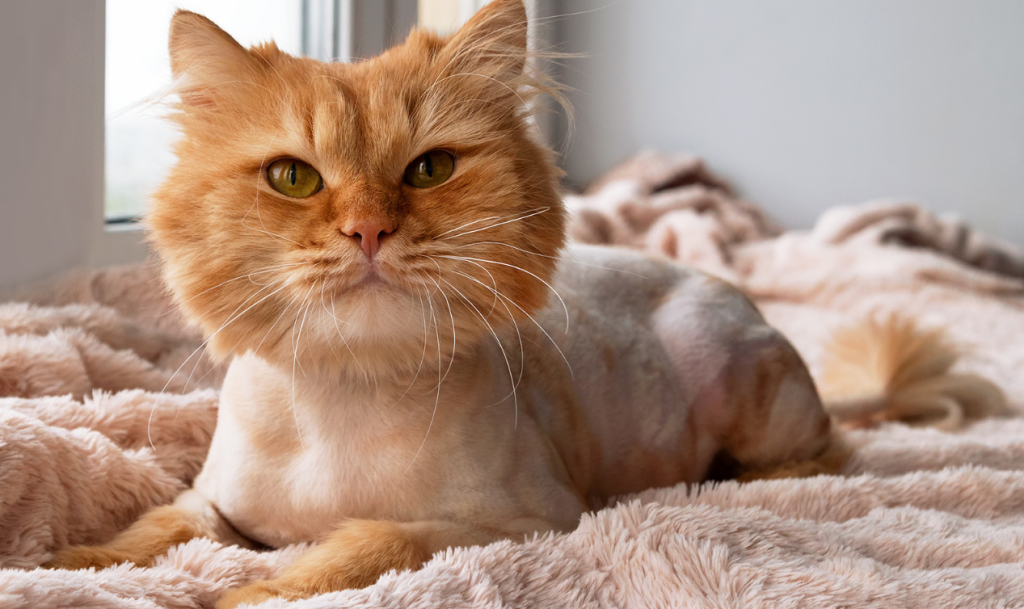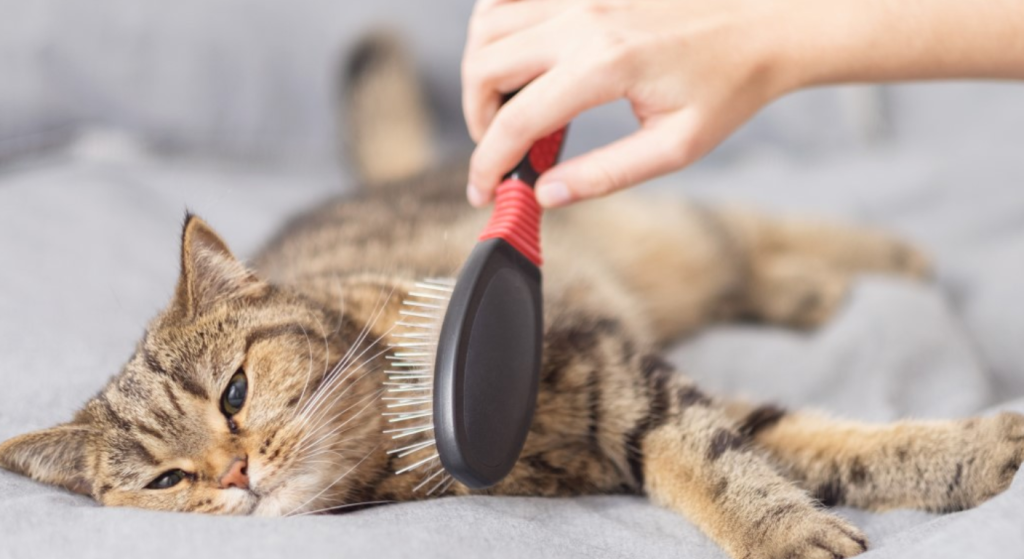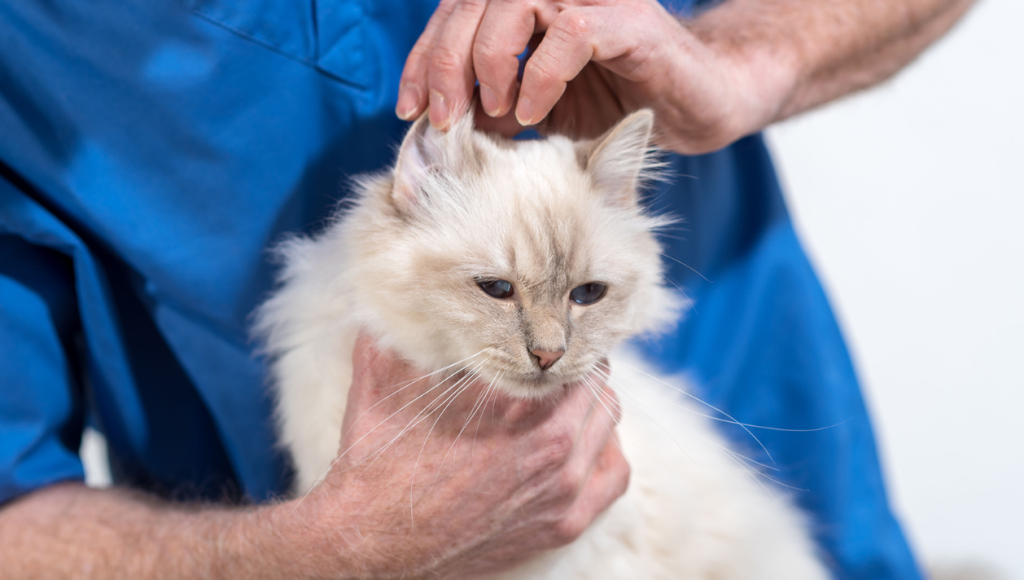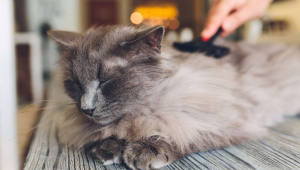As a fellow cat lover and owner, I know one of the biggest concerns is dealing with cat hair shedding and regrowth. It’s normal to wonder does cat hair grow back after shaving or seasonal shedding.
To help provide clarity for cat owners, I conducted thorough research on the cat hair growth cycle using veterinary sources, scientific journals, and experienced pet experts.
In this comprehensive guide, I will explain the phases of hair growth, causes of shedding, and tips to manage regrowth. Read on to get a detailed overview of this natural process for cats.
Overview of the Feline Hair Growth Cycle
Like humans, cats have thousands of individual hairs that continuously go through growth cycles. Each hair follicle on a cat’s body follows these key stages:
Anagen – Active Growth Phase
This long phase lasts 2-6 years, depending on the body region. The hair rapidly grows at a rate of about 1 cm per month as the follicle produces new hair cells. This phase accounts for 85-90% of the hairs on a cat at any given time.
Catagen – Transitional Phase
A short 2-3 week phase where the hair stops growing. The follicle shrinks to detach the hair from its blood supply and prepare it to be shed.
Telogen – Resting Phase
Lasts 2-3 months. The hair stops growing and becomes club shaped as the follicle rests. These club hairs remain attached to the skin until naturally shed.
Exogen – Shedding Phase
The club hairs are finally released as cats groom or you brush them. The hair has completed its growth cycle and falls out so a new hair can begin growing.
What Triggers Seasonal Cat Shedding?
While cats naturally shed all year, you may notice increased shedding at certain times due to hormonal changes.
Spring Shedding
When daylight hours increase in spring, cats shed their thicker winter coat to make way for a lighter summer coat. The change in light triggers hormone shifts that cause more hairs to enter the telogen phase together.
Fall Shedding
As daylight decreases in autumn, cats begin shedding their summer coat to grow in a warmer winter undercoat for insulation. The hormone melatonin rises to stimulate hair follicle growth.
Does Shaved Cat Hair Grow Back Differently?

If your cat was shaved for surgery or medical reasons, you may worry their hair won’t grow back properly. But as long as the follicles are healthy, the new hairs should regenerate with the original texture, density, and color. Here are some tips for regrowth after shaving:
- Use a sweater or onesie until the fur regrows to prevent temperature regulation issues.
- Limit sun exposure to avoid sunburn on the bare skin.
- Gently brush once the stubble begins growing to prevent matting.
- Be patient, as the new hair may initially feel coarse before softening up.
- Expect significant shedding around 4-6 weeks as the new anagen hairs push out the shaved ones.
Do Cat Whiskers and Eyebrows Shed and Regrow?
You may notice cat whiskers or eyebrow hairs shed out periodically. Here’s some information on their unique cycles:
Whiskers
- Whiskers typically shed every 3-4 months, but follicles quickly regenerate so you rarely see bald spots.
- They aid cats’ spatial awareness and hunting skills, so avoid cutting or plucking them.
- Whiskers may initially regrow crooked if cut, so let them shed naturally.
Eyebrows
- Eyebrow hairs also shed and regrow every few months.
- They protect cats’ eyes from dust and dirt. Never trim or pluck them.
- Eyebrow hair and whisker growth is linked to overall health, age, and testosterone levels.
Tips to Manage Cat Shedding and Regrowth

While shedding is healthy for cats, loose hair can be annoying. Here are tips to manage it:
Regular Brushing
- Brush frequently with a de-shedding tool to remove loose hairs and distribute skin oils for healthy regrowth.
- Start young to get your cat comfortable with daily brushing. Go slowly and give treats.
- Brushing mimics natural grooming and stimulates blood circulation to the skin.
Bathing and Grooming
- Bathe cats every 6-8 weeks to wash away dead hair before it sheds onto furniture.
- Use a moisturizing cat shampoo and conditioner made for frequent use.
- Ask your groomer for a sanitary trim around problem shedding areas.
Cleaning and Containment
- Use rubber pet hair removal tools daily on surfaces.
- Vacuum twice weekly with a HEPA filter vacuum.
- Wash linens and clothing weekly to reduce embedded hair and dander.
- Use furniture covers and air purifiers to limit loose hair.
Diet and Supplements
- Feed a high quality diet rich in omega-3s for healthy skin and coat.
- Ask your vet about supplements like fish oil, biotin, or Vitamin B complex to reduce shedding.
- Stay on top of parasite prevention, allergy management, and environmental stressors.
Accept Normal Shedding
- Understand that moderate shedding is part of owning a cat.
- The more you brush and groom, the less loose hair will end up on your clothes and furniture.
- Use washable furniture covers in light colors to hide shed hair between grooming.
When to See the Vet About Cat Hair Loss

While some shedding is normal, excessive hair loss or thinning hair can signal an underlying issue. Contact your vet if your cat has:
- Sudden bare patches or thinning coat in specific areas.
- Red, flaky, or scaly skin along with hair loss.
- Evidence of parasites like fleas or skin mites.
- Increased overgrooming, licking, biting, or scratching focused on certain spots.
- Hair loss accompanied by changes like weight loss or lethargy.
- No clear cause such as allergies, stress, or skin trauma.
Potential medical causes of abnormal cat hair loss include:
- Parasites – fleas, mites, ringworm fungus
- Hormonal disorders – thyroid disease, Cushing’s disease
- Allergies – food, environmental or skin allergies
- Autoimmune disease – alopecia or skin mite dermatitis
- Stress, anxiety, or compulsive disorders
- Nutritional deficiencies – fatty acids, vitamins
- Cancer – lymphoma, malignant melanoma
- Immune disorders – staph infection, fungal infection
Your vet can run tests like skin scrapings, cultures, or bloodwork to pinpoint the cause and recommend appropriate treatment to address the root of the problem, allowing healthy hair regrowth.
Typical Regrowth Timeline After Hair Loss
Once the underlying cause of your cat’s hair loss is treated, their hair should start naturally growing back within 4-8 weeks as follicles re-enter the anagen phase.
However, it can take up to 6 months for the coat to fully return to its normal thickness and coverage, especially in long-haired breeds. Be patient and focus on nutrition, skin health, and grooming to support the regrowth process.
FAQs About Cat Hair Regrowth
Does cat fur change color when it regrows?
Cat fur can gradually lighten or darken over time as the coat regenerates. Sudden color changes may indicate a health issue.
How long until a long-haired cat’s coat grows back after shaving?
Long-haired cats like Persians may take 4-6 months to fully regrow a shaved coat. Short-haired cats may regrow in 2-3 months.
Is it safe to shave my cat in summer?
Vets don’t recommend shaving cats unless medically needed, as their coat protects them from sun and regulates temperature. It’s better to brush frequently and keep them cool.
Will cat dander increase after shaving their coat?
No, dander comes from skin and saliva, not the hair itself. Shaving won’t directly influence allergen levels. Shedding helps remove excess dander.
The Takeaway on Cat Hair Regrowth
To recap, the key points about cat hair regrowth are:
- Shedding and regrowth are natural processes cats go through year-round.
- Seasonal shedding increases during spring and fall due to light/hormone changes.
- Unless medically needed, it’s best not to shave cats but rather manage shedding through grooming.
- Excessive hair loss or bald spots warrant a veterinary examination to diagnose the cause.
- With time and proper care, the cat’s hair growth cycle will allow their coat to return to its normal lushness.
Understanding the science behind the phases of hair growth and implementing proactive grooming, nutrition and health management will ensure your cat’s coat regrows beautifully.

